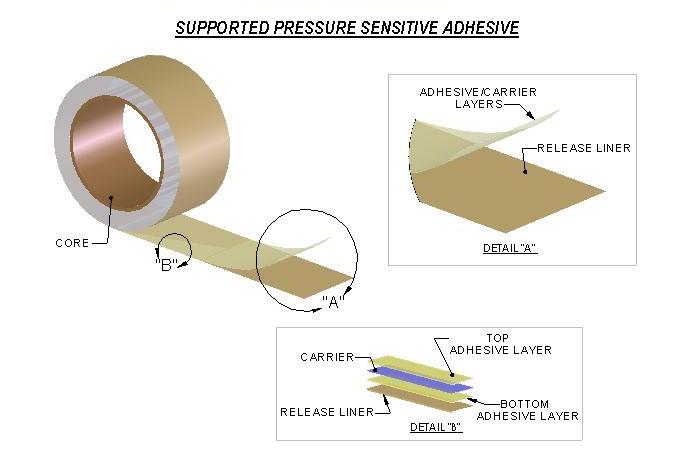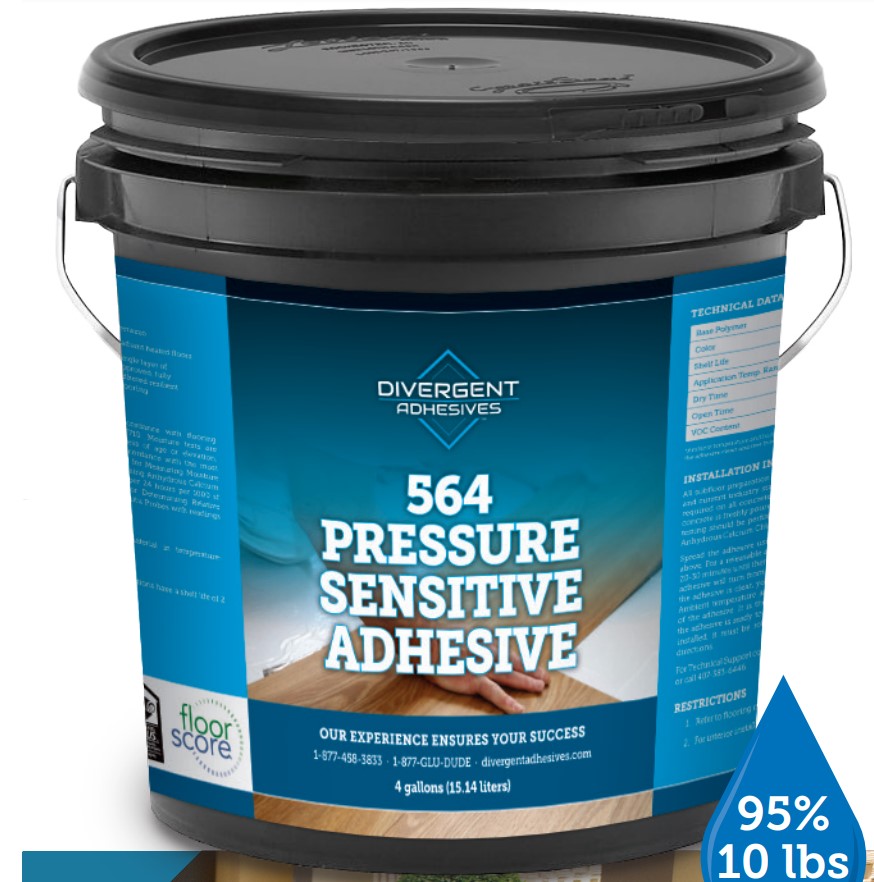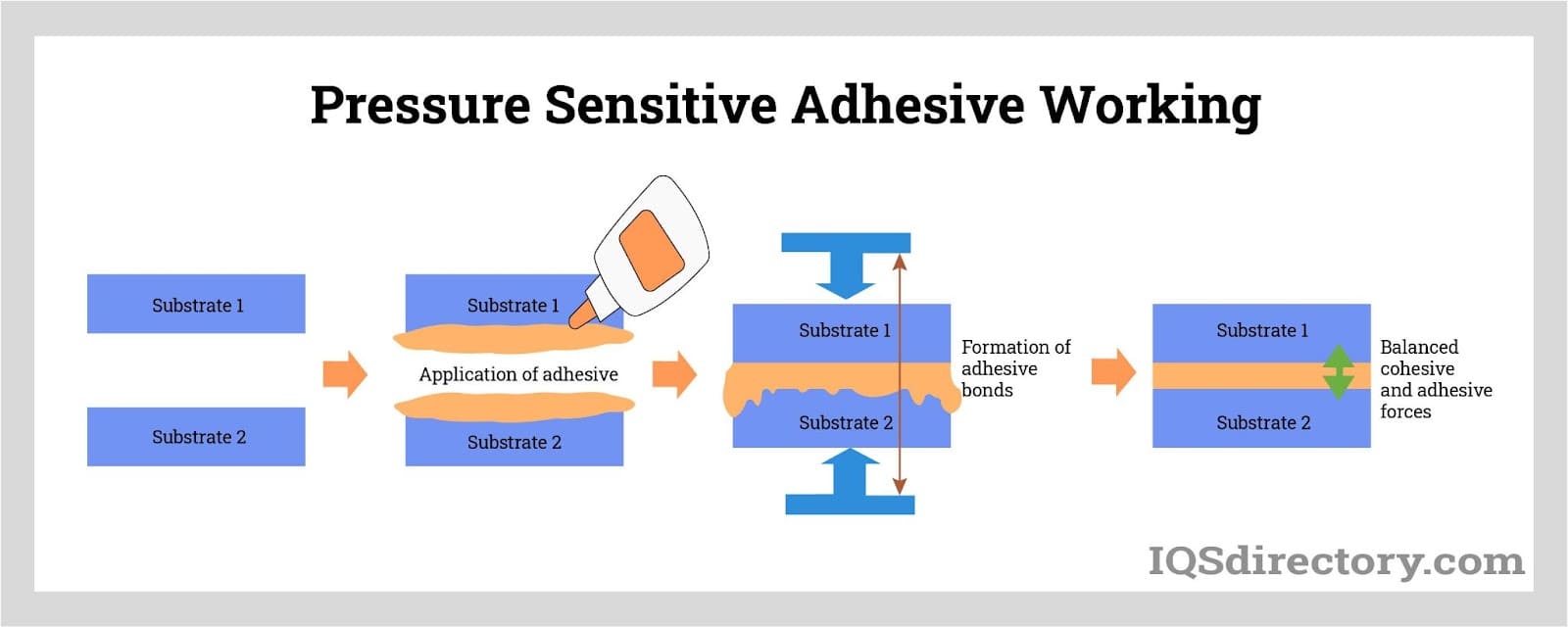To apply pressure sensitive adhesive, peel off the backing and firmly press it onto a clean, dry surface. Ensure there are no air bubbles for a secure bond.
Pressure sensitive adhesives are versatile and commonly used in various industries. From arts and crafts to industrial applications, these adhesives provide a convenient and efficient way to bond materials together. Understanding the proper application method is crucial for achieving optimal results.
In this blog post, we will discuss the steps involved in applying pressure sensitive adhesive correctly to ensure a strong and durable bond. Whether you are a DIY enthusiast or a professional in the manufacturing sector, mastering this technique can enhance the quality and longevity of your projects.

Introduction To Pressure Sensitive Adhesives
Pressure Sensitive Adhesives (PSAs) are versatile bonding materials that adhere instantly when light pressure is applied. They are characterized by their ability to form a bond without the need for heat, solvent, or water activation. PSAs are tacky to the touch and provide excellent adhesion to a variety of surfaces.
These adhesives offer several characteristics that make them popular in various industries. They are easy to use, require no mixing or curing time, and offer high initial tack. PSAs are also known for their ability to conform to irregular surfaces, making them suitable for applications with different shapes and sizes.
Pressure sensitive adhesives find common use in many industries, including packaging, automotive, medical, and electronics. They are used for bonding labels, tapes, graphics, and protective films, among other applications. The versatility, convenience, and reliability of PSAs make them a preferred choice for many bonding needs.
Types Of Pressure Sensitive Adhesives
| Types of Pressure Sensitive Adhesives | ||
|---|---|---|
| Rubber-Based Adhesives | Acrylic Adhesives | Silicone Adhesives |
Pressure sensitive adhesives come in various types, including rubber-based, acrylic, and silicone adhesives. Rubber-based adhesives offer excellent tack and adhesion to low-energy surfaces. Acrylic adhesives are known for their durability and resistance to UV light and weathering. On the other hand, silicone adhesives provide high-temperature resistance and flexibility. Each type has unique properties, making them suitable for different applications.
Preparation Before Application
Before applying the pressure sensitive adhesive, it is crucial to prepare the surface properly. Start by cleaning the surface thoroughly to remove any dirt, dust, or grease that could affect the adhesive’s performance. Use a mild detergent and water to clean the surface, and ensure it is completely dry before proceeding.
Next, measure and cut the adhesive to the desired size and shape. Accurate measurements and clean cuts are essential for a successful application. Be sure to use sharp scissors or a utility knife to achieve clean edges and precise dimensions. Taking the time to prepare the surface and the adhesive will ensure a strong and lasting bond.

Application Techniques
Applying pressure sensitive adhesive (PSA) can be done manually or using application equipment.
Manual Application
When applying PSA manually, it is important to follow a few key steps:
- Clean the surface thoroughly to ensure proper adhesion.
- Peel off the release liner from the PSA tape or film.
- Align the adhesive side with the desired surface.
- Apply firm and even pressure to ensure proper bonding.
- Smooth out any air bubbles or wrinkles.
- Allow sufficient time for the adhesive to set and bond.
Using these techniques, manual application of PSA can be effective and efficient. However, for larger or more complex applications, the use of application equipment may be necessary.
Common Mistakes And How To Avoid Them
When applying pressure sensitive adhesive, it’s crucial to avoid common mistakes that can compromise the effectiveness of the adhesive. Ignoring proper surface preparation is a common error that can lead to adhesion failure. It’s important to thoroughly clean and dry the surface before application to ensure optimal adhesion.
Applying incorrect pressure during the application process can also lead to issues. It’s essential to follow the manufacturer’s guidelines regarding the recommended pressure for the specific adhesive being used. Additionally, misaligning the adhesive during application can result in improper bonding and reduced effectiveness.
Curing And Setting Times
To ensure proper adhesion, follow the recommended curing and setting times for pressure sensitive adhesive application. Adhere to the specified timeframes for optimal bonding strength and performance of the adhesive. It is crucial to allow sufficient time for the adhesive to set effectively before subjecting it to any stress or load.
| Time Guidelines: |
| For optimal results, curing and setting times of pressure sensitive adhesives depend on temperature and humidity. |
| Ensure temperature ranges between 65-85°F and humidity levels are 40-60% for ideal adhesion. |
Maintenance And Removal
To apply pressure sensitive adhesive, ensure the surface is clean and dry. Peel off the backing and press the adhesive firmly onto the area. Use a roller to ensure proper adhesion and smooth out any air bubbles. For removal, gently lift the adhesive from the corner and slowly peel it away.
| Cleaning the Bonded Surfaces | Removing the Adhesive |
| Use a mild solvent on a soft cloth to clean surfaces. | Apply heat from a hairdryer to soften the adhesive. |
| Rub gently to avoid damaging the material underneath. | Peel off the adhesive slowly and steadily. |
| Rinse with water and dry thoroughly before reapplying. | Use a residue remover for any remaining sticky residue. |

Troubleshooting Common Issues
Learn how to effectively apply pressure sensitive adhesive with these troubleshooting tips. Discover common issues and find solutions to ensure a successful adhesive application process.
| Weak Adhesion | Bubbles and Wrinkles | Edge Lifting |
| Check surface cleanliness before applying adhesive. | Smooth out bubbles by applying pressure during installation. | Ensure proper overlap of adhesive to prevent edge lifting. |
| Use primer for better adhesion on challenging surfaces. | Avoid trapped air by slowly applying adhesive from one end. | Apply additional adhesive to secure lifted edges. |
Frequently Asked Questions
How Do You Apply Pressure Sensitive Adhesive?
To apply pressure sensitive adhesive, clean the surface where you want to apply the adhesive, and then cut the adhesive tape to the desired length. Peel off the backing from one end and press the adhesive onto the surface. Slowly remove the backing while pressing the adhesive onto the surface.
Can Pressure Sensitive Adhesive Be Removed?
Yes, pressure sensitive adhesive can be removed easily without leaving any residue. You can use a plastic scraper or your fingers to peel off the adhesive from the surface. If the adhesive is stubborn, use a solvent such as rubbing alcohol or acetone to dissolve the adhesive.
What Surfaces Can Pressure Sensitive Adhesive Be Applied To?
Pressure sensitive adhesive can be applied to a variety of surfaces, including paper, cardboard, plastic, metal, glass, and wood. It is important to ensure that the surface is clean and dry before applying the adhesive to ensure maximum adhesion.
How Long Does Pressure Sensitive Adhesive Last?
The longevity of pressure sensitive adhesive depends on various factors such as the type of adhesive used, the surface to which it is applied, and the conditions in which it is used. Generally, pressure sensitive adhesive can last for several years if applied correctly and used in normal conditions.
Conclusion
Applying pressure sensitive adhesive requires careful attention to detail. By following the steps outlined above, you can achieve optimal bonding results for your project. Remember to choose the right adhesive for your application, properly prepare the surface, apply the adhesive evenly, and allow for adequate drying time.
With these tips in mind, you can confidently use pressure sensitive adhesive for a variety of projects.
